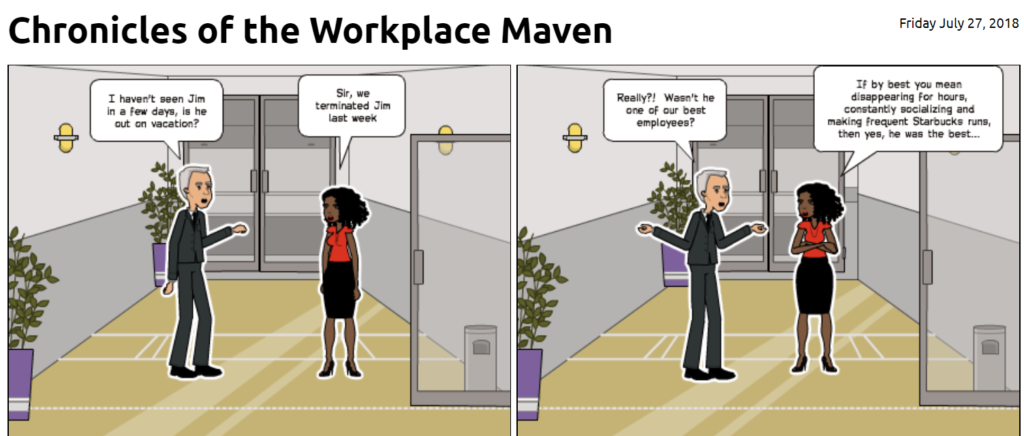An effective performance management strategy is a vital, yet often underutilized source of attaining a competitive advantage. It requires taking an active role in both the successes and failures of the employees in the organization. The right strategic approach to managing employee performance can generate a high-performance culture while ensuring the efficiency and effectiveness of an organization. Below are 4 key elements to creating an effective performance management culture.
1. Define Roles & Expectations
From the moment an employee is onboarded, clear direction as to job performance standards and goals should be provided so that employees know what is expected of them. The worst thing you can do is to put someone into a role or allow them to remain in a role without clearly defining what it is that they are to do and why it’s important. Never assume your employees know either what’s expected of them or how their contributions impact the greater good. Take the time to clearly and concisely outline each employee’s job functions and responsibilities. By setting clear expectations together with measurable goals, you are establishing the guard rails for your employee’s performance. When employees are clear on their individual role and responsibilities and understand how they contribute to organizational success, they’re often more focused and motivated to achieve goals which results in success for both the business and the individual employee.
2. Devote Time to Frequent Feedback
Offering continuous feedback opportunities is a crucial first step in ongoing performance management. Gone should be the days where waiting until year-end appraisals to evaluate an employee’s performance is the primary source of feedback received. When feedback is ongoing and effective, not only does it eliminate the unpleasant “surprise” of not knowing where you stand until the end of the year, but it also contributes to the development and advancement of the employee. What does good effective feedback look like? It can be as simple as a comment made contemporaneous with an event or as detailed and structured as prescheduled one on one discussions. It can be positive or negative, as both types of feedback are useful. Positive feedback provides reinforcement of what has been done well and encourages an employee to continue down that path. Whereas negative feedback can help improve and increase performance because the employee will know the areas that need improvement. The key is that the feedback take place. An employee can only know how they’re doing and how their contributions are contributing to the success of the organization through a regular and effective dialogue.
3. Engage in Coaching and Development
The first step in any effort to improve employee performance is developing an employee through coaching. Coaching focuses on the developmental side of acquiring knowledge and skills to help the employee effectively perform their job. It should be a continuous process that is designed to help an employee become more competent and overcome barriers to improving performance. Effectively coaching an employee can be accomplished in 3 easy steps. First, clearly define any performance problems that may exist. Second, seek to understand from the employee what may be contributing to the issue or performance in question. Lastly, collaboratively create a plan for improvement that provides for measurable goals with checkpoints along the way. Coaching, when done correctly, is a key concept in achieving top performance. It requires a commitment and desire to participate actively in the employee’s development with the main objective of achieving optimal productivity and performance.
4. Hold Employees Accountable
If performance issues persist after applying the initial principles of performance management it is time to hold employees accountable through written disciplinary action. Too frequently, employees with known performance issues that have not improved are ignored or not appropriately addressed. But the reality is that these employees disrupt the workplace, hinder the effectiveness of the larger population and threaten the success of the organization. When holding an employee accountable through written disciplinary action, you should be specific and progressively explain the consequences that result from failing to correct their performance deficiencies. The goal should be to clearly identify the behaviors that are preventing them from successfully performing their responsibilities and provide them with an opportunity to correct that behavior. Through effective documented counseling, a problem or marginal employee may be salvaged and may again become a productive member of the organization. However, if after following progressive discipline the employee fails to correct their behavior, then it’s time for separation so that efforts can be better spent on those employees that have a desire to improve and succeed. The end result in either case will be to remain with employees that are productive contributors to the goals of the organization.
Performance management must begin from day one and should continue throughout the employee life-cycle. Establishing a conscientious performance management strategy where employees are provided with appropriate direction, opportunities of continuous feedback, support and improvement will foster more productive employees and ultimately a thriving organization whose employees create a formidable competitive advantage.


In total agreement that the productivity of the employee needs to be carefully defined at hiring.
In my current position, I strive for excellence but I do not get feedback until the end of the year for the yearly evaluation. Knowing that your employer or director is aware of the setbacks to the companies progress and developing a plan of action along the way is key.
Thank you for these valuable tools for proper leadership and effective engagement strategies.